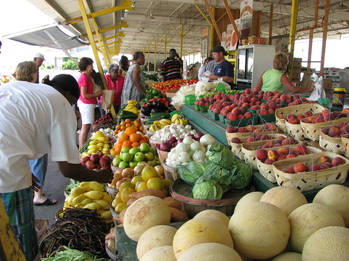 A few weeks ago in Toronto, I had the pleasure of hearing my colleague Seth Berkowitz, a talented young researcher at MGH, present a project. His presentation was clear, his research methods thoughtful and his analysis impeccable. But after his talk, rather than praise, he got push-back. Why? Because his findings challenged a popular theory for socioeconomic differences in healthy food access, obesity and diabetes; he found that living in a food desert does not affect individuals’ control over their diabetes. The U.S. Department of Agriculture (USDA) defines food deserts as “urban neighborhoods and rural towns without ready access to fresh, healthy, and affordable food.” Specifically, it defines food deserts as census tracts that are both low-income and where residents are far away from a grocery store (1 mile or farther in urban areas, 10 miles or farther in rural areas). Seth created a statistical model to examine whether living in a food desert or individual factors like income had a stronger relationship to hemoglobin A1c. Hemoglobin A1c is a blood component that can indicate how well individuals with diabetes are managing their blood sugar levels. Seth found that individual-level factors were overwhelmingly more important for predicting A1c than community-level factors. Living in a food desert was not associated at all with poor diabetes control.
Seth’s study is not an anomaly. A recent National Bureau of Economic Research working paper by Jessie Handbury and colleagues found that even if access to healthy foods is the same, income and education status are still the strongest predictors of families purchasing healthful foods. And Jason Block, faculty at the Obesity Prevention Program and a writer for this blog, has found that, at least in a specific cohort in eastern Massachusetts, proximity to fast food restaurants is not associated with obesity. But why did so many physicians question Seth’s research methods, rather than congratulate him on his interesting findings? The theory has been that food deserts prevent low-income people, whose diets tend to be poor quality, from accessing healthy food even if they are trying to eat healthier. This theory is so powerful that the USDA and other government agencies are investing money in improving access to healthy food in USDA-recognized food deserts. But what if this money is poorly spent? Seth’s conclusion, which was overshadowed by the audience’s discomfort, is that individual-level poverty is extremely important. Interventions to improve individual-level buying power, whether by expanding programs to support families in buying food, such as SNAP (Supplemental Nutrition Assistance Program) and WIC (Women and Infants with Children) or increasing the minimum wage, will be more effective than interventions on food deserts alone. While more research is needed to improve our understanding of the relationship between the built environment, income, and health, it is likely that improving access to healthy food is necessary but insufficient. Supporting buying power for low-income individuals is also vital, and may be synergistic with interventions to decrease food deserts. Thus, physicians should advocate for programs such as SNAP and WIC and increases in the minimum wage, as well as interventions to improve food access. The combination is most likely to improve what our patients eat.
0 Comments
Your comment will be posted after it is approved.
Leave a Reply. |
©2017 WeighingInBlog. All rights reserved. 401 Park Drive, Boston, MA




 RSS Feed
RSS Feed

